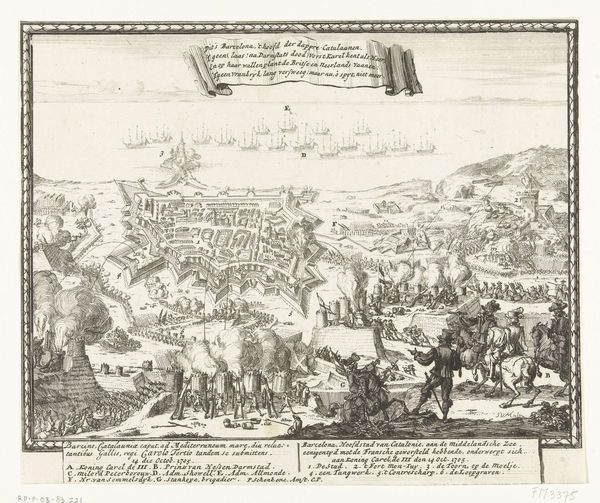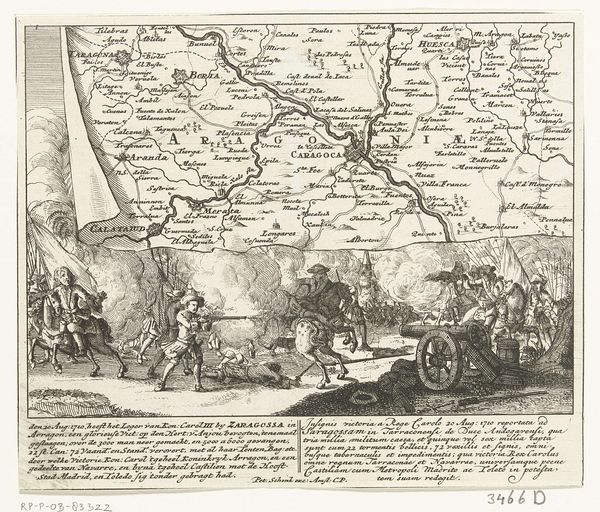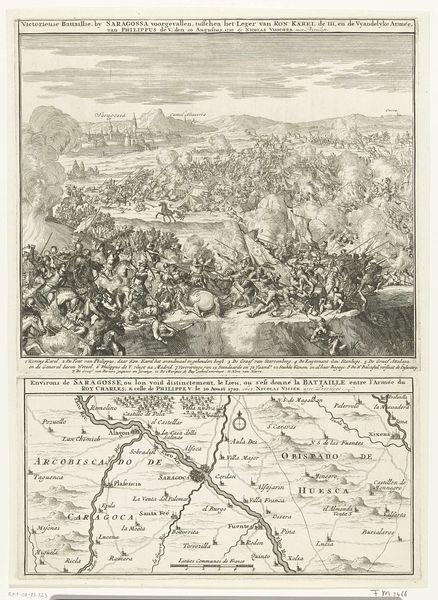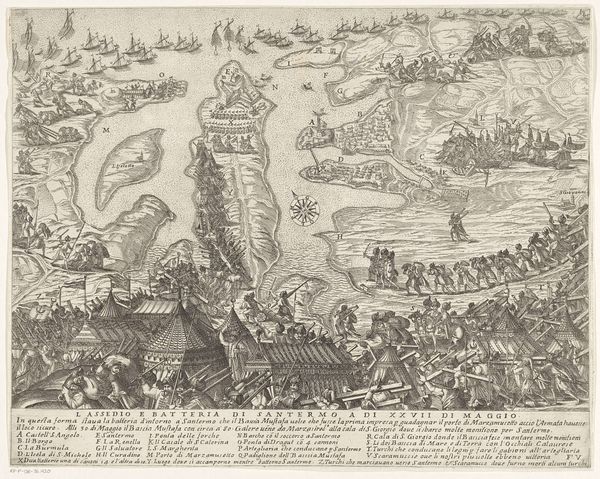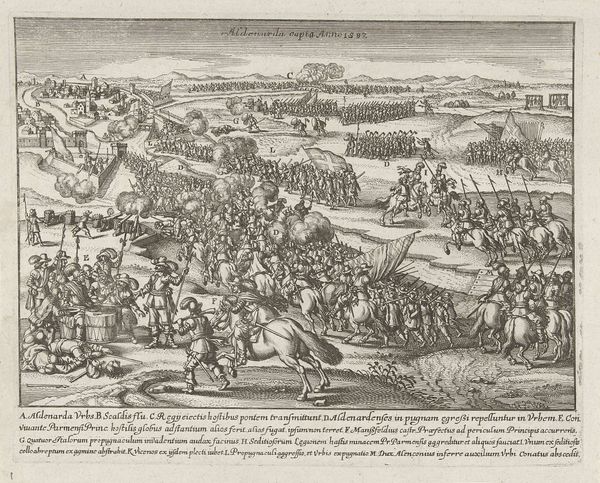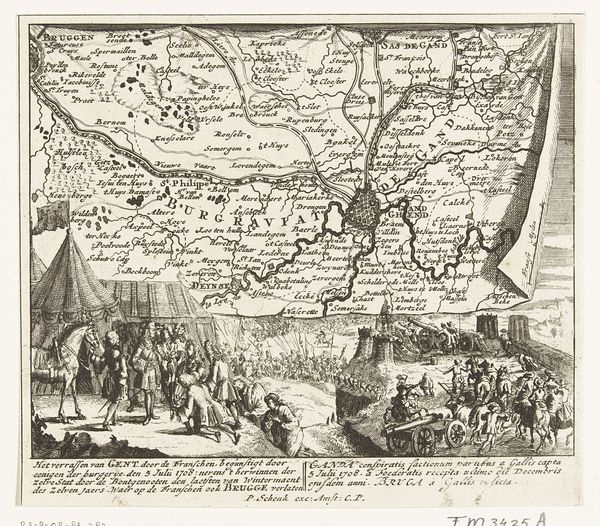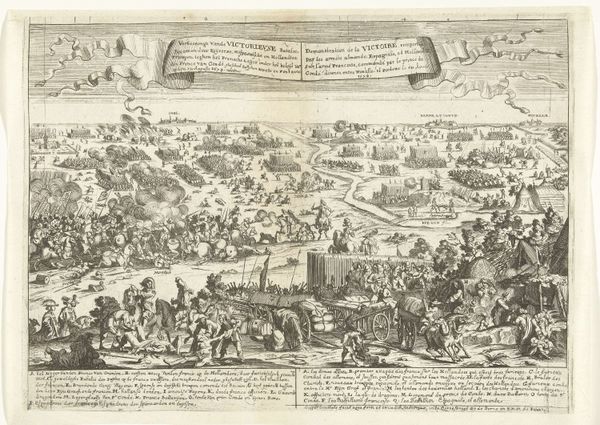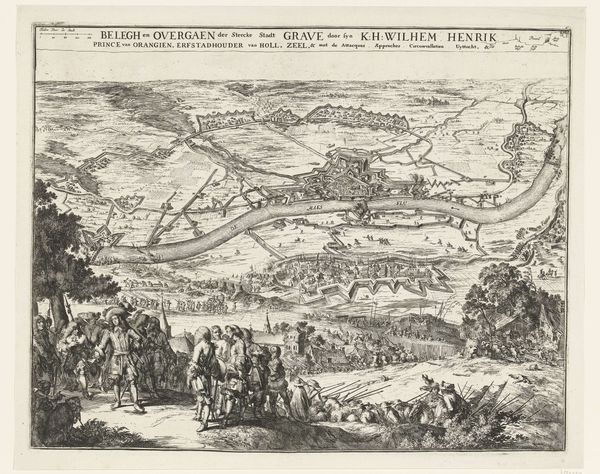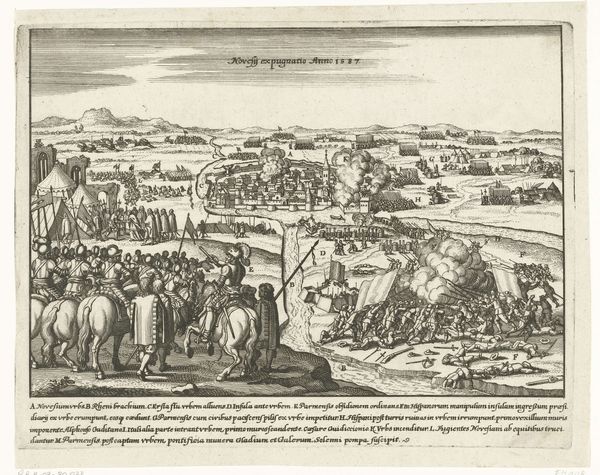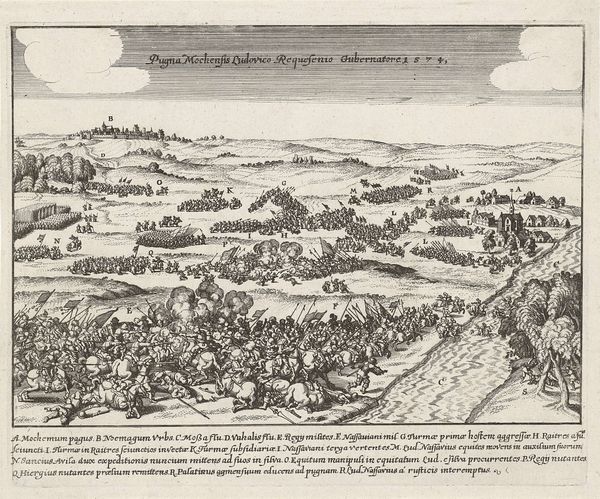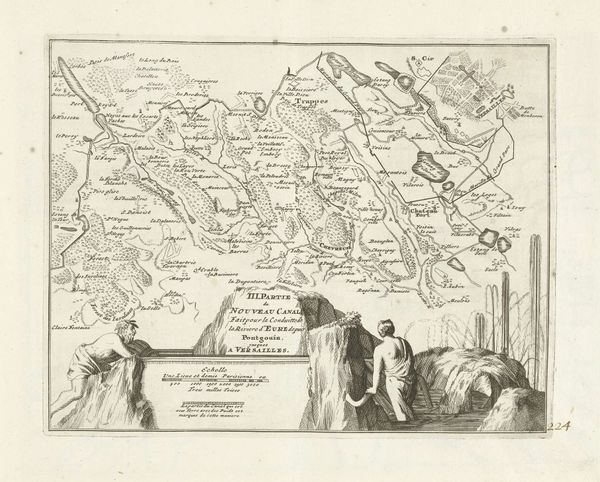
print, engraving
# print
#
pen illustration
#
old engraving style
#
landscape
#
figuration
#
line
#
history-painting
#
engraving
Dimensions: height 163 mm, width 195 mm
Copyright: Rijks Museum: Open Domain
Editor: This is a fascinating print titled "Slag bij Brihuega in Castilië, 1710," or "Battle of Brihuega in Castile, 1710", by Pieter Schenk. The blend of the map and the battle scene is striking, almost like two worlds colliding on one page. What catches your eye most when you look at it? Curator: Formally speaking, I find the superimposition of the geographical map and the chaotic battle scene intriguing. The battle at the bottom serves as a sort of chaotic base, upon which the more ordered space of cartography rests. I am immediately drawn to the formal structure--the stark lines of the engraving, which give a real sense of dynamism to the clash, as well as acting as contour lines of a battlefield, in effect. Editor: The dynamism definitely comes through. But, does the composition offer other insights? Curator: Indeed. The strategic arrangement emphasizes both conflict and geographical awareness, and perhaps control. Note how the sharp, contrasting lines create depth, particularly around the areas depicting smoke and movement. It brings a very modern feel. Editor: Modern, really? How so? Curator: It seems that it anticipates the early modern aesthetics in which art moved from attempts to realistically depict the world as observed, towards more analytical or diagrammatic forms of representation. Also, the somewhat dispassionate representation of violent actions reminds me of similar aesthetics during the Enlightenment, such as the etching work "Los Desastres de la Guerra" from Goya during the Napoleonic Wars. What do you think? Editor: That's a really insightful perspective. I see it now—less a glorification of battle and more of an analytical representation, or documentation, even. I had just considered it to be an unsophisticated historical depiction. Curator: Yes, it's precisely how these formal elements work together that suggests the artist's intent. And, for me, makes it art. Editor: That's given me a lot to consider. Thank you for sharing your insight.
Comments
No comments
Be the first to comment and join the conversation on the ultimate creative platform.
